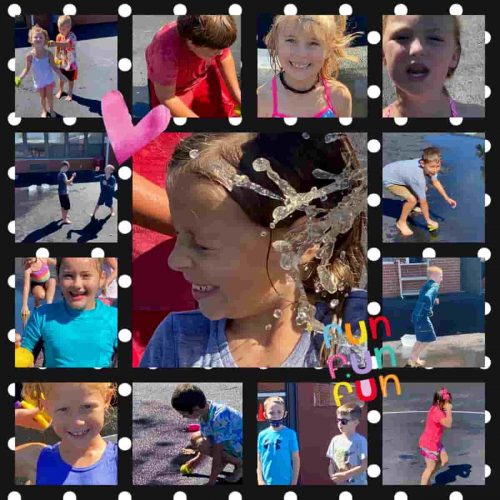Table of Contents
Professor John Hattie’s research around effective teaching and learning practices ranks belonging as one of the most influencing factors in student achievement. This means schools that promote inherent worth can influence a child’s lifelong trajectory.
In the 2020-2021 school year, Yorkville School District, a suburb west of Chicago, was one of a few in Illinois to reopen brick and mortar schools in August. Parents had the choice of three learning models. Like all educators, we faced the challenges of COVID-19 which included health and safety guidelines, staffing and resources needs, and tackling learning loss. The emotional, social, physical, and academic impact on students is difficult to ascertain, yet undoubtedly real.
It was no small feat to reopen a preK-12 unit school district of 6,300 students amid a pandemic. Shared efficacy mattered more than ever. Collectively, we took hold of one main objective: Happiness matters. This does not discount rigor, use of data, and student growth. However, with this acute awareness, it was our priority, that above all else, students needed to feel safe, nurtured, and cared for in a time of so much uncertainty. Here are a few ways we put student well-being and happiness first.
Morning Meeting
We welcome our students into school each day. Yet, often the stress of student achievement causes schools to miss the mark on building true community. Students need belonging and connection. This year, before anything else, we begin with a 20 minute classroom Morning Meeting school wide. The Book, “Morning Meeting” shares simple routines. Students can also act as leaders! For example, this second grader designed the morning meeting and took the role of facilitator. Greeting every child and setting the tone for learning pays off.
Play is not a privilege. It’s a necessity.
Often recess and physical education class are the first to be cut due to other school priorities. With months of remote learning, Yorkville School District decided to do just the opposite. The schedule was modified to address student needs. This meant increased play. Recess was doubled. Even in a half-day kindergarten schedule, students have time for play.
Recess is not taken away as a ‘consequence.’ This intentionality allows for students to practice learned skills from morning meeting. Unstructured time leads to discovery and curiosity. For example, after a third grade class observed the school courtyard to be bland, they collaborated on a colorful chalk mural for two weeks.
Schools, like ours, often find increased play equates to decreased behavioral issues. To date, one of the primary schools, Yorkville Grade, received less than one dozen office referrals. This is no coincidence. Research shows play helps students with self regulation, peer interactions, and cognitive development. Most importantly, play is part of the essence of childhood.
Beyond our Walls
With health guidelines, this year presented a unique chance to focus on outdoor learning. While enjoying a mask break and fresh air, students reconnected with nature. Physical education classes reorganized units to maximize outdoor lessons during nice weather.
Using flexible furniture, simple outdoor classrooms were built. Teachers took students on learning walks. For many schools, outdoor learning and play increased by 280%. Thematic outdoor days also promote this kind of engagement. For example, fall exploration day included leaf collages, pumpkin painting, apple experiments, and poetry.
Feedback from students using Google surveys helps the leadership team plan and involve students! Looking ahead, the district and parent stakeholder groups consider permanent outdoor learning spaces. A key ingredient in student well-being and cultivating happy children includes incorporating nature.
Celebrate Little Things
If we believe students have inherent worth, we need to reinforce this regularly. In the absence of common school events, small things like Good News, phone calls home, Mystery Readers via Zoom, birthday books, lunch with the principal, outdoor dance parties, and Friday spirit shirts energizes school culture.
Reimagine Tomorrow
Every district made unique choices on learning models this year. In The New York Times, podcast The Daily episode Odessa: Part 1, the narrator shares the Texas public high school reopening story. In the beginning, teenagers sit on a bus on the way to a game, and the fun-loving social chatter is captured. As the journalist notes, these small interactions were unremarkably remarkable. In the midst of a pandemic, small things like this, once so ordinary, were rare in the 2020-2021 school year.
For Yorkville 115, students also played and shared shrieks of joy each day. With vaccination dissemination and changing guidelines, many districts will resume in person learning. As schools return, prioritizing this focus on student well-being means giving students the emotional space to just be kids. Like Odessa, children running towards the swings, is unremarkably remarkable. As Yorkville Grade School principal watches students from afar, she realizes the importance of this gift today and beyond.
Student Well-Being Tomorrow
Challenging times reveal unexpected silver linings. As educators, we must wonder: should there be a return to what was prior to COVID-19? Or maybe instead of looking back, we can use our experience to reimagine tomorrow.

